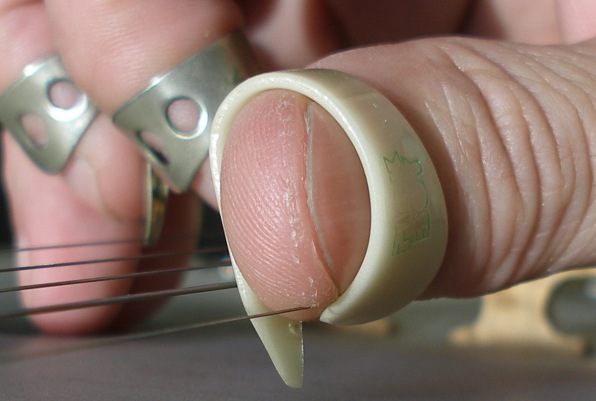Navigating the page, reconstructing a Bach prelude, composition books, motion-controlled sound processing, and thumb picks (for good measure)!
On Michael’s smiley-score idea: I’ve mentioned Larry Austin’s Art is Self-Alteration is cage is… before, and it’s worth a look with your idea in mind. It’s probably also discussed in Austin’s book, Learning to Compose, in the TAMU library.
- This video shows the only image I could find of the score: it’s just the black lines on white paper, with sets of four musical staves inside blocky versions of the letters C, A, G, E. The record label superimposed the photos and colors for the album cover. Click here
- Here is a description of the piece: click here
Earlier in the semester, I mentioned two composition books that may be helpful for you, but I forgot to add them to the web notes. Here they are again. Both are in the TAMU library:
- Larry Austin and Thomas Clark, Learning to Compose. Link on Google Books: click here. This has a wide variety of unconventional approaches to composing, which relate to and add to techniques we’ve discussed in class (e.g., mapping non-musical phenomena). Austin was a student of John Cage’s, and Clark studied with avant garde trombone innovator Stuart Dempster (you might say the Charlotte Moorman of trombone.
- William Russo, Composing Music: A New Approach. Link on Google Books: click here. It is very accessible for anyone who can read music at all. It focuses more directly on pitches and rhythms, but it gives a variety of approaches to make pitch and rhythm decisions without relying on traditional crutches. Russo studied with early free jazz and third stream jazz innovator Lennie Tristano and was a trombonist in Stan Kenton’s innovative jazz orchestras.
On Michael’s idea of scrambling an existing melody, here is Stephen Robinson’s deconstruction of Bach’s famous prelude for cello (BWV 1007) from Ulrich’s last visit to TAMU. Stephen took the pitch pattern of the first measure, and set up delays and pitch shifters so that Ulrich need only play the first note and the remaining notes would follow. Stephen also did this for a few other distinct patterns that appear Bach’s prelude. Stephen’s prelude consists of Ulrich’s exploration of what happens when he plays different pitches, more than one pitch, etc. into this simple but rich system. Note that this idea doesn’t need to be done live with technology: it could be used as an offline composition technique, worked out by hand. Click here
On Jeff’s and Wes’s piece, Grant mentioned the Source Audio Hot hand for motion-controlled sound processing. We also mentioned thumbpicks
